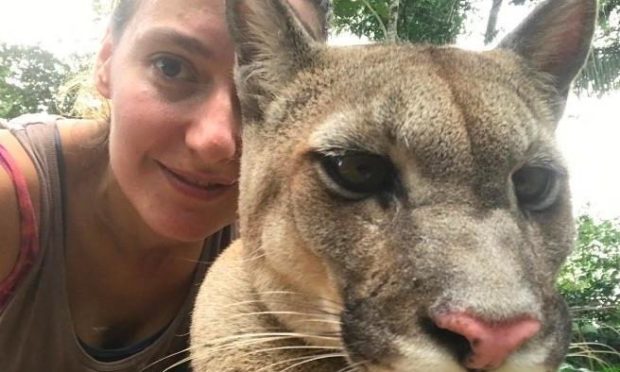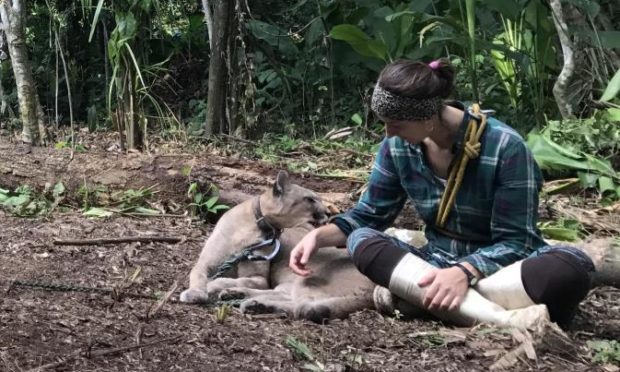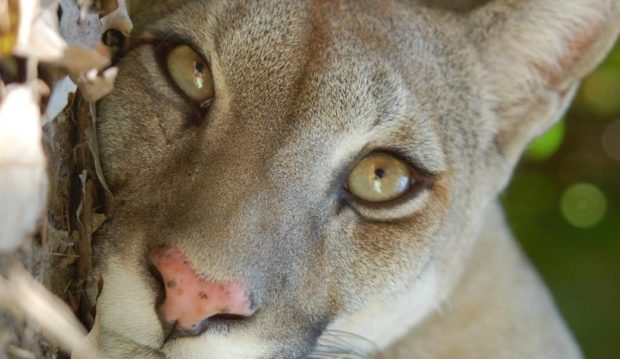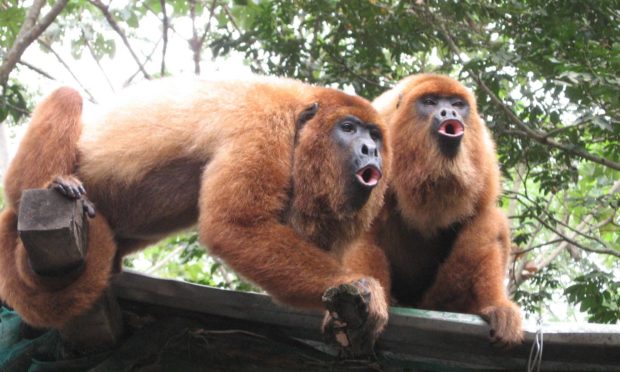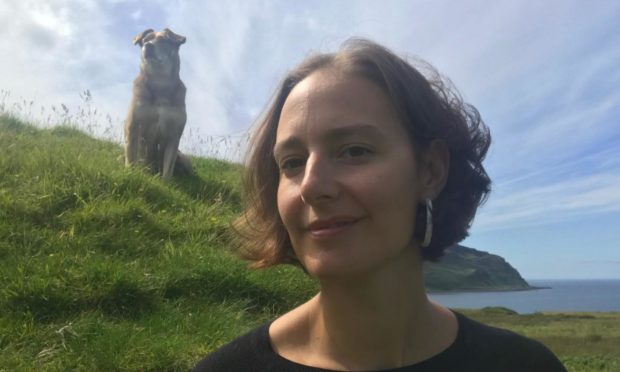Laura Coleman changed the course of two lives when she swapped her job in the city for a backpacking adventure in the Bolivian jungle.
Seeking direction and a purpose, she discovered her calling by chance in a ramshackle animal sanctuary which became her new home.
In cramped and primitive conditions, she formed enduring friendships with fellow volunteers against a backdrop of ravaging fires, rampaging deforestation and black market animal trading.
However, it was the bond she formed with a wild but traumatised puma that made the deepest impression and made her learn more about herself.
Now living on Eigg, Laura has written a book about her time in Bolivia.
The Puma Years is a memoir of her time in the jungle and her ongoing efforts to help the animals and the people who look after them.
‘I didn’t know anything about Bolivia, but gave it a go’
Although started soon after returning from Bolivia, it was completed on the island last year while she was suffering from long Covid.
Published by Little A, it has already received glowing reviews, including from renowned environmentalist Dr Jane Goodall, founder of the Jane Goodall Institute and a UN Messenger of Peace.
In 2007, Laura was a 24-year-old university graduate working in marketing when she decided it was time for change.
She said: “I wasn’t enjoying it, but wasn’t sure why. I felt unhappy and wanted to try something different.
“I had family friends working in Bolivia, a place I didn’t know anything about. But at the time it was the cheapest place to fly to in South America so I thought I’d give it a go.”
After travelling around for a while, she missed a boat connection and went to an internet café, contemplating cutting short her intended three-month trip.
“I was depressed and at my wits end. I had a month left on my ticket, but I was thinking of just going home.”
It was then she spotted a flyer for an animal rescue centre, some six hours drive away. Fate took a hand, starting an association that has lasted 14 years.
‘I thought I’m not going to be able to do this’
But first impressions of the centre in the middle of the Amazon jungle were not good.
The volunteers were crammed six to a room in bunk beds in rundown buildings with no electricity, hot water or internet, but plenty of rats and cockroaches.
The nearest doctor was an hour’s hitch away.
“I hated it at the start”, said Laura. “It was terrifying and I was miserable. Everything seemed filthy, there were all these animals running around and there were mosquitos everywhere. I thought ‘I’m not going to be able to do this’.”
She signed up for a month’s volunteering for Comunidad Inti Wara Yassi (CIWY), which manages three wildlife sanctuaries.
She was asked to look after Wayra, a puma left at the sanctuary at ten months after it is thought her mother was killed by traffickers.
The centre tries to release as many of the rescued or injured animals as possible back to the wild. But Wayra was among those not equipped to return to the jungle.
‘I now had a purpose’
Laura said: “She was traumatised, confused, upset and scared of the jungle and of people. She desperately wanted to be wild, but couldn’t. That was heart-breaking.
“It was a very long process but I knew this cat needed help and someone who she could depend on and learn to trust. That’s when I fell head over heels in love with her in a way that I had never experienced with another person or creature.
“Working with Wayra, the other animals and the community, I now had a purpose. That’s what I had not understood when I was living aimlessly in London, going from job to job not knowing what I wanted to do.
“Now, there was a feeling of getting up every day knowing I had to make sure the animals were as healthy and happy as they could be. The conditions didn’t matter, it was the work that was important.”
Laura spent up to ten hours a day with Wayra, often in huge enclosures in the jungle away from tourists, where the puma could walk, run, climb and swim. In time she was able to sit next to the wild animal who would lick her arm when she was feeling safe.
The bond between the two was established and continues to grow as Laura returns to Bolivia each year.
“Each time I go back she remembers me. I spent a long time being afraid of her. Now I know her so well, her movements and body language and can predict what she is going to do most of the time.
“I trust Wayra more than I trust most people to be honest. We’re friends. She is usually happy to see me. They are wild animals but they are like any other creature needing companionship.
Two desperate creatures looking for rescue
“She completely changed everything about my life and who I am as a person. Since I went there, my life has been pretty much dedicated to Wayra and making sure she is as happy as she can be.
“It has changed my priorities and changed how I interact with the world.
“At its heart, the book is a love story about two desperate creatures looking for rescue.”
Returning home, Laura set up the Brighton-based organisation ONCA, meaning jaguar (panthera onca).
It provides creative support for artists and communities tackling social and environmental justice issues.
I trust Wayra more than I trust most people.”
Laura Coleman
She also chair Friends of Inti Wara Yassi, the UK charity that supports CIWY which has been devastated by Covid with international volunteers unable to travel.
Proceeds from the book have already funded a new quarantine building for another of the organisation’s sanctuaries which continues to face the threat of deforestation.
“When I first went there you could literally sleep on the road because there were no cars. Now you could not stand on the road for a second as there are so many trucks carrying massive Amazonian trees.
“We have a situation where these animals need protection but the environment is being destroyed. The sanctuary was once surrounded by jungle, but now it’s an oasis in the middle of farmland.”
She continues her work from Eigg, where she moved three years ago.
Laura said: “When I came to Eigg I fell in love with the place. I have the same sense of home I had in Bolivia. I wanted somewhere slightly removed from lots of people.
“It’s been the perfect place to complete the book.
“I feel lucky every day to be here.”
The Puma Years, Laura’s first book, was published this week.
